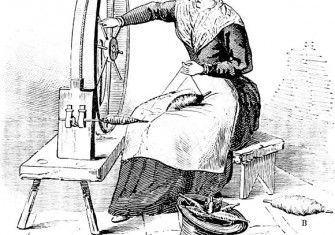Toil and Technology in Britain and America
Martin Daunton explores 19th century production on both sides of the Atlantic.
‘The factory system’ is not a term which hints at an elusive ambiguity. On the contrary, it is redolent of the obvious and mundane: a building containing a source of power to drive machinery, to which the workforce was subordinated. But this mechanistic view of factories and machine technology misses vital aspects of the process of industrialisation; the factory was a social organisation as well as a physical construct. Of course, the factory system and machine technology complemented rather than competed with the domestic system and hand technology, so that the process of industrialisation did not involve the replacement of a 'traditional' by a 'modern' productive organisation, but rather had a dual character. This perception needs to be taken a stage further, for the factory system itself did not emerge in a standardised manner, but varied between countries and changed over time.







